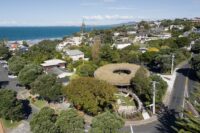- Home
- Articles
- Architectural Portfolio
- Architectral Presentation
- Inspirational Stories
- Architecture News
- Visualization
- BIM Industry
- Facade Design
- Parametric Design
- Career
- Landscape Architecture
- Construction
- Artificial Intelligence
- Sketching
- Design Softwares
- Diagrams
- Writing
- Architectural Tips
- Sustainability
- Courses
- Concept
- Technology
- History & Heritage
- Future of Architecture
- Guides & How-To
- Art & Culture
- Projects
- Interior Design
- Competitions
- Jobs
- Store
- Tools
- More
- Home
- Articles
- Architectural Portfolio
- Architectral Presentation
- Inspirational Stories
- Architecture News
- Visualization
- BIM Industry
- Facade Design
- Parametric Design
- Career
- Landscape Architecture
- Construction
- Artificial Intelligence
- Sketching
- Design Softwares
- Diagrams
- Writing
- Architectural Tips
- Sustainability
- Courses
- Concept
- Technology
- History & Heritage
- Future of Architecture
- Guides & How-To
- Art & Culture
- Projects
- Interior Design
- Competitions
- Jobs
- Store
- Tools
- More

The waves of nostalgia have a tendency to revisit us time and again. As much as we aspire for a futuristic look, there’s a certain allure in the old-world charm. Whether it’s the flickering lamplight of a vintage lantern or the subdued palette of mid-century modern, old-school decoration vibes continue to captivate and inspire the contemporary design world.
Table of Contents
Toggle1. The Return to Rustic
Far removed from the clean lines of modernity, the rustic charm encapsulates an honest, back-to-basics aesthetic. Think exposed wooden beams, distressed finishes, and handcrafted furniture. Each piece tells a story of its own, creating a space that feels both lived-in and loved.
2. Victorian Elegance
Drenched in history and grandeur, Victorian style evokes images of high ceilings, ornate mouldings, dark woods, and plush velvets. This period was defined by attention to detail; every element, from intricately designed wallpapers to plush, tufted furnishings, screamed luxury and opulence.

3. Mid-Century Modern Magic
Between the 1930s and 1960s, a design movement began which prioritized function and simplicity. This era, referred to as mid-century modern, champions organic shapes, sleek lines, and minimalist design. Furniture pieces like the Eames chair or tulip table are iconic symbols of this era’s blend of style and functionality.
4. Boho Chic: Unapologetically Bold
With its roots in the free-spirited counterculture of the 1960s and 70s, Bohemian style is eclectic, colorful, and full of life. It’s a mix and match of patterns, colors, and textures, often incorporating elements from various cultures, time periods, and design philosophies. Macrame wall hangings, vibrant textiles, and an abundance of plants encapsulate the Boho vibe.
5. Art Deco: The Roaring Twenties
Bold, glamorous, and a bit over-the-top, Art Deco design took the world by storm in the 1920s. This style is characterized by geometric patterns, bold color contrasts, and luxurious materials like gold, marble, and velvet. Imagine The Great Gatsby’s lavish parties to get a sense of the era’s aesthetics.
6. Retro Revival
The 70s and 80s are back in a big way. From bold, geometric patterns to the audacious color palettes (think mustard yellows, avocado greens, and deep oranges), the retro vibe has been making waves in contemporary spaces, offering a mix of irony, humor, and chicness.

Blending the Eras
Today’s designers have the unique advantage of drawing inspiration from multiple eras, crafting spaces that marry the best of all worlds. A mid-century sofa might be paired with a Victorian-era chandelier, or a rustic wooden table might be juxtaposed against a backdrop of Art Deco wallpaper. These combinations breathe fresh life into old-school vibes, showcasing a harmony between past and present.
Embracing old-school decoration vibes is not just about making a statement; it’s about acknowledging and celebrating the rich tapestry of design history. In weaving these threads from the past into contemporary spaces, we find a unique blend of comfort, nostalgia, and timeless elegance.

When it comes to interior design, the terms “vintage” and “retro” are often used interchangeably. However, they refer to distinct styles and time periods. Here’s a breakdown of the differences between vintage and retro style interior design:
Vintage: Vintage interior design often boasts muted tones, weathered finishes, and a sense of authentic wear-and-tear. The designs, patterns, and color palettes from the specific era being referenced are maintained with a high degree of authenticity. A true vintage space often incorporates actual items and decor from the era in question. This means that many of the pieces have a history and have withstood the test of time.
Retro: This style is characterized by bright, bold colors and patterns. Think geometric shapes, pop art, and a playful take on design elements. The retro vibe can be more about capturing the spirit of the era rather than a strict replication. While retro can incorporate genuine pieces from the 70s, 80s, or 90s, it’s more about the reinterpretation of the style from those decades. Modern materials and manufacturing might be used to recreate or nod to the designs of the past.

Submit your architectural projects
Follow these steps for submission your project. Submission FormLatest Posts
Pedestrian Accidents Without a Crosswalk: Can You Still Recover Compensation?
Getting hit while crossing outside a crosswalk can feel like an instant...
8 Examples of Successful Disaster Resilient Architecture
As climate risks increase, architects around the world are creating innovative structures...
Preventing Cyber Threats in Smart Buildings by Design
The trend of integrating IoT technologies into buildings isn’t going away. More...
Procreate vs Photoshop: Should Architects and Designers Use Them for Architecture Work?
Procreate vs Photoshop for architects: see when to sketch on iPad and...












Leave a comment